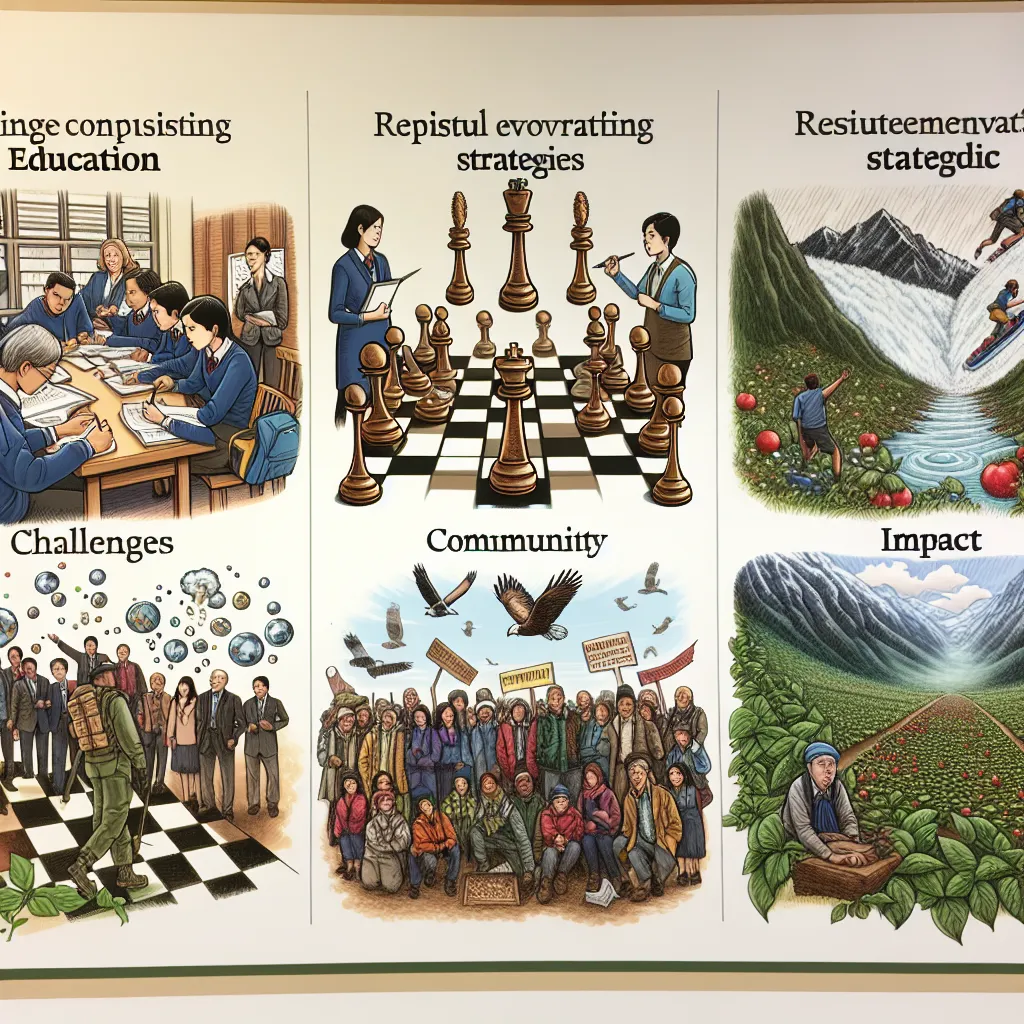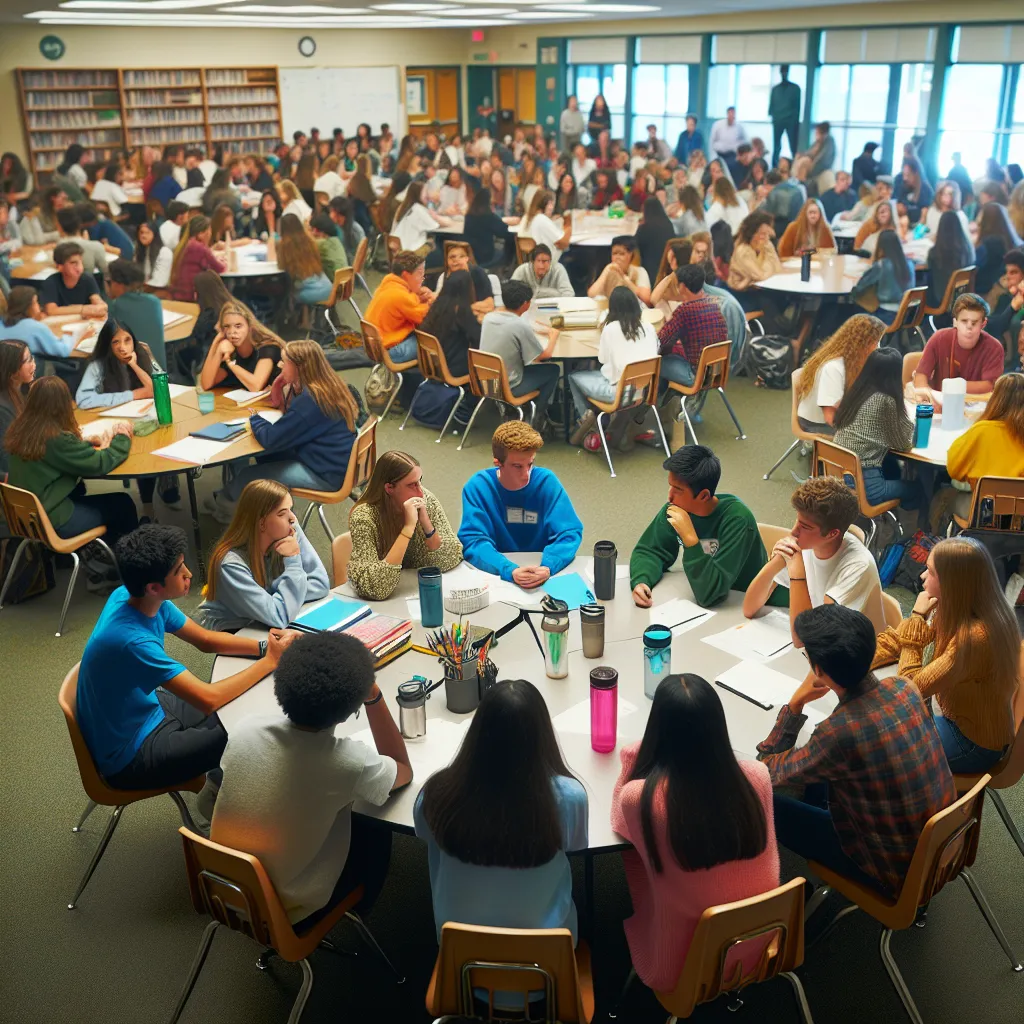Ask AI on The Internet
Question: If you were Mr Nkosi what type of “learning community” strategies would you propose at Green Valley High School to assist students with the challenges that they are facing at this school? (8 marks) What positive impact would the learning community have on students? (6 marks) Who are the people that you would involve and why? (6 marks) What challenges do you anticipate Mr Nkosi would encounter when creating the “learning community”? What can he do to resolve those challenges? (10 marks)
### Learning Community Strategies at Green Valley High School #### Strategies (8 marks) 1. **Collaborative Learning Groups**: - Form small, diverse teams of students to work on projects and study together. - Encourage peer-to-peer tutoring and mentorship programs. 2. **Professional Learning Communities (PLCs) for Teachers**: - Encourage teachers to come together regularly to share teaching strategies, discuss student progress, and plan integrated units. - Implement continuous professional development workshops. 3. **Parent and Community Involvement**: - Host regular meetings, workshops, and events that include parents and members of the community to foster a supportive environment. - Establish partnerships with local businesses and organizations for resources and mentorship opportunities. 4. **Technology Integration**: - Use educational technology platforms for assessments, resources, and communication to help students and teachers stay connected and engaged. - Implement classroom tech tools that promote interactive and personalized learning experiences. 5. **Student Voice and Leadership**: - Create student councils or committees to involve students in decision-making processes. - Encourage students to lead initiatives, host workshops, and present their ideas for school improvement. 6. **Counseling and Support Services**: - Increase access to counseling services that address academic, emotional, and social challenges. - Establish specialized support groups focused on specific issues like stress management, college preparation, and career guidance. 7. **Extracurricular Activities**: - Expand the range of extracurricular activities to include academic clubs, sports, arts, and other interest groups. - Involve students in organizing and leading these activities to build teamwork and leadership skills. 8. **Feedback and Reflection Mechanisms**: - Implement regular feedback loops where students and teachers can reflect on their experiences and suggest improvements. - Use surveys, suggestion boxes, and focus groups to gather feedback continuously. ### Positive Impact on Students (6 marks) 1. **Enhanced Academic Performance**: Improved support and resources can help students understand and retain material better. 2. **Increased Engagement**: Collaborative and diverse learning opportunities can make learning more interesting and relevant. 3. **Improved Social Skills**: Working in groups and participating in extracurricular activities can build communication and teamwork skills. 4. **Greater Sense of Belonging**: Inclusion in decision-making and community involvement can make students feel valued and part of a larger community. 5. **Better Emotional Well-being**: Access to counseling and peer support can help students manage stress and emotional challenges more effectively. 6. **Leadership Development**: Opportunities to lead and organize can develop students' leadership and organizational skills. ### People to Involve and Why (6 marks) 1. **Teachers**: - Essential for implementing and sustaining learning initiatives. - Provide insights into student needs and curriculum development. 2. **Students**: - Their involvement ensures that the strategies are student-centered and relevant. - They can act as leaders and motivators for their peers. 3. **Parents and Guardians**: - Important for understanding and supporting students’ needs outside the school environment. - Can contribute resources, time, and expertise. 4. **School Administrators**: - Necessary for policy support and resource allocation. - Can help in institutionalizing successful strategies. 5. **Community Members and Local Businesses**: - Provide real-world connections, resources, and mentorship opportunities. - Can help students understand the applicability of their learning. 6. **Counselors and Support Staff**: - Address emotional, social, and academic challenges faced by students. - Provide specialized support services and interventions. ### Anticipated Challenges and Resolutions (10 marks) 1. **Resistance to Change**: - **Challenge**: Teachers, students, or parents might resist new strategies. - **Resolution**: Conduct workshops and sessions to explain the benefits and involve all stakeholders in the planning process to gain buy-in. 2. **Resource Constraints**: - **Challenge**: Limitations in budget and materials. - **Resolution**: Seek grants, partnerships, and community donations. Prioritize the most impactful initiatives for immediate implementation. 3. **Time Management**: - **Challenge**: Finding time within the school schedule to implement new strategies. - **Resolution**: Integrate activities within existing structures and routines. Use after-school programs and flexible scheduling. 4. **Sustaining Engagement**: - **Challenge**: Maintaining ongoing interest and participation from all stakeholders. - **Resolution**: Celebrate small wins and progress, and keep communication open with regular updates and feedback sessions. 5. **Measuring Impact**: - **Challenge**: Ensuring that the learning community strategies are effective. - **Resolution**: Establish clear goals and metrics. Use data-driven approaches to monitor progress and make necessary adjustments. 6. **Balancing Diverse Needs**: - **Challenge**: Addressing the varying needs of different student groups. - **Resolution**: Customize programs to cater to different learning styles and requirements. Encourage inclusivity and diversity in all initiatives. 7. **Integration with Existing Curriculum**: - **Challenge**: Aligning new initiatives with the existing curriculum. - **Resolution**: Collaborate with curriculum planners to ensure alignment and leverage existing resources to enhance new initiatives. By proactively addressing these challenges and leveraging the strengths of the community, Mr. Nkosi can create a vibrant and effective learning community at Green Valley High School.
Think your answer is better than the AI's? Post it below.
Other Most Relevant Posts:
 Title: Crafting a Supportive Learning Community at Green Valley High School: Strategies and Challenges
Title: Crafting a Supportive Learning Community at Green Valley High School: Strategies and Challenges
 **Title: Mr. Nkosi's Harmonious Harmony: Cultivating a Thriving Learning Community at Green Valley High School**
**Title: Mr. Nkosi's Harmonious Harmony: Cultivating a Thriving Learning Community at Green Valley High School**
 Title: Innovative Strategies for Enhancing Student Success: A Comprehensive Guide for Green Valley High School
Title: Innovative Strategies for Enhancing Student Success: A Comprehensive Guide for Green Valley High School
Question Tags
If you want your question answered by an AI, click here.




Post your own comment: